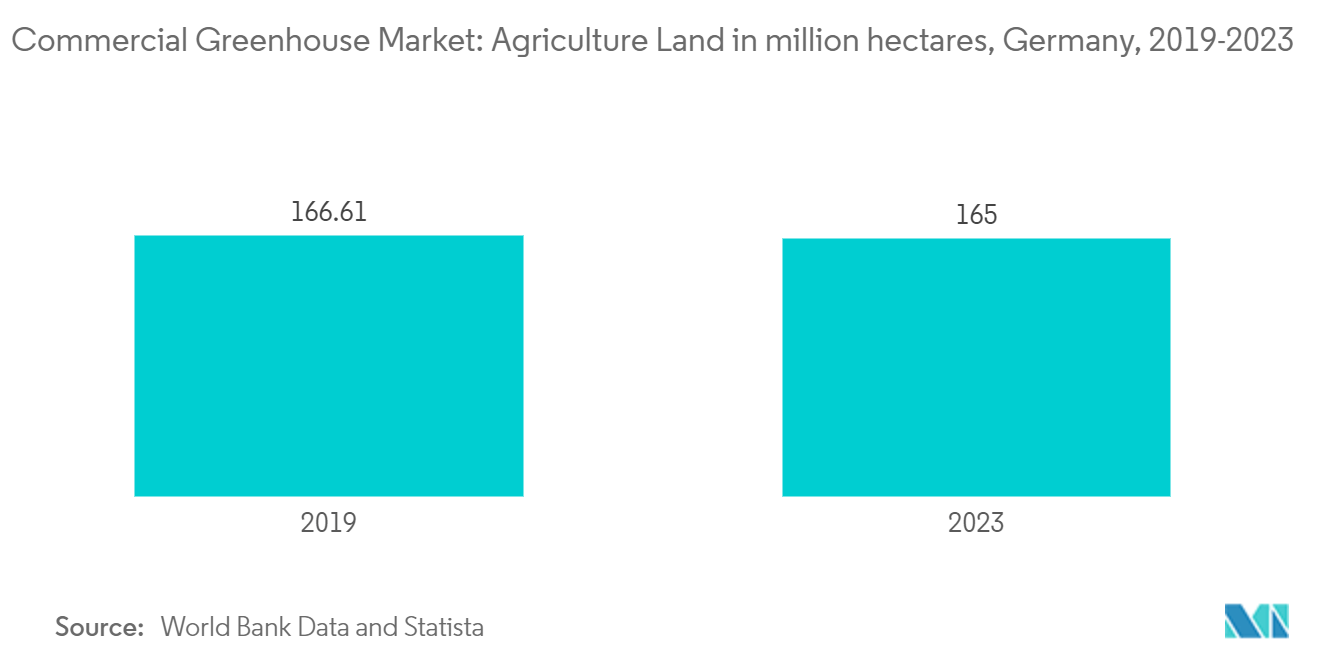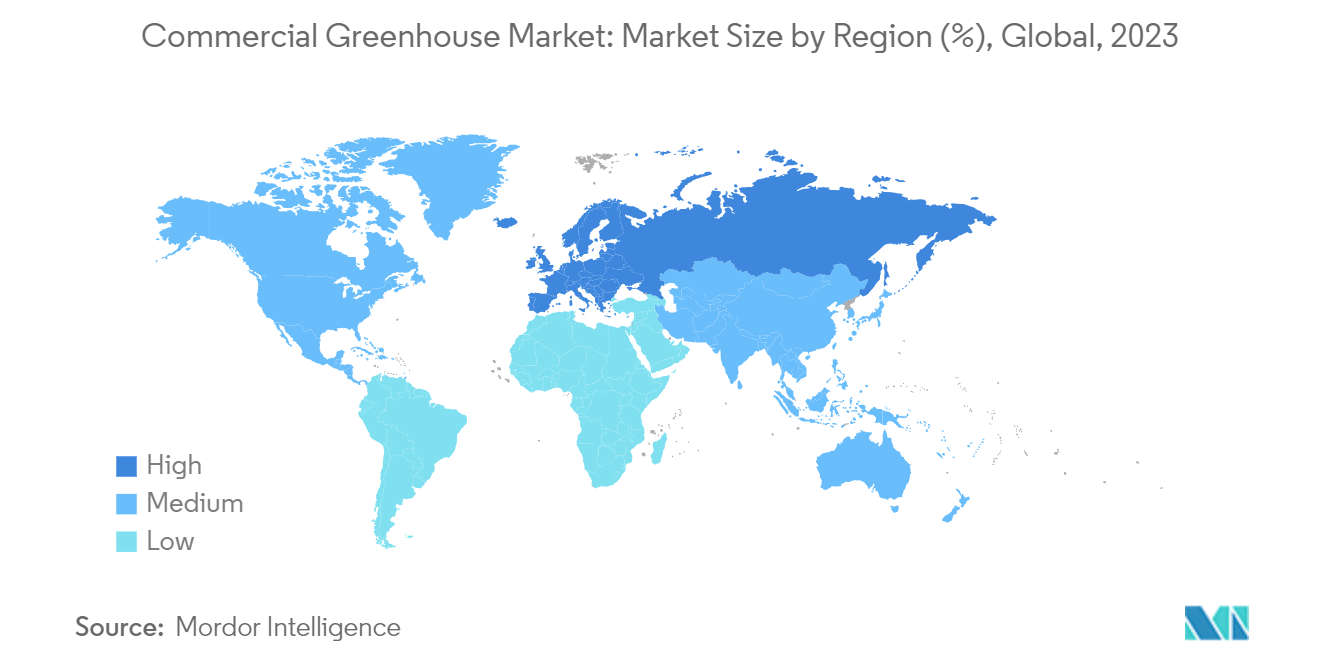Market Trends of Commercial Greenhouse Industry
Declining Agricultural Land is Boosting the Usage of Commercial Greenhouse
Global agricultural land is diminishing due to urban expansion and infrastructure development encroaching on fertile areas. This reduction in available land puts strain on existing agricultural resources, leading to soil degradation and decreased food security. To tackle these challenges, investments in commercial greenhouse farming and controlled-environment agriculture (CEA) within commercial greenhouses are rising.
Over the past decade, Europe has witnessed a decline in agricultural land. The EU Agriculture Outlook predicts that by 2030, Europe’s total arable land will decrease further due to urbanization, emphasizing the need to utilize agricultural areas efficiently. With population growth and rapid urban development, there is a pressing demand to enhance crop yields in the coming decades. Consequently, the adoption of cultivation methods like commercial greenhouse farming is increasing to achieve higher productivity.
Globally, significant portions of arable land have been lost due to erosion and pollution over the past 40 years. This loss has potentially dire consequences for the global food supply. Rising temperatures, unpredictable rainfall patterns, and extreme weather events, such as droughts and floods, render large areas unsuitable for traditional agriculture. As a result, there is an increasing demand for climate-resilient crops and adaptation technologies, including heat-resistant commercial greenhouses, which are expected to increase adoption during the forecast period.

Europe Holds the Largest Share in Commercial Greenhouse Installment
Germany has traditionally been at the forefront of implementing advanced techniques in smart greenhouse horticulture. The total area under commercial greenhouse cultivation in Germany was 1300 hectares in 2023. Most of this area was occupied by tomato crops, with an acreage of 382.74 hectares. Similarly, the cultivation area under cucumber was 215 hectares. The most extensive areas of commercial greenhouse vegetable cultivation in Germany are North Rhine Westphalia, Rhineland Palatinate, and Lower Saxony. Additionally, subsidies for energy-efficient greenhouses, covering up to 60% of eligible expenses, help reduce operating costs.
Moreover, the commercial growth of greenhouses has increased on a massive scale in the United Kingdom. Many companies in the United Kingdom are leveraging new technologies. For instance, in March 2022, Tomtech designed and produced industrial control and monitoring equipment for commercial greenhouses. Their systems use sensors to automatically track and regulate light, heat, air circulation, irrigation, fertigation, and fertilizer dosing to maintain the greatest possible growth environment.


